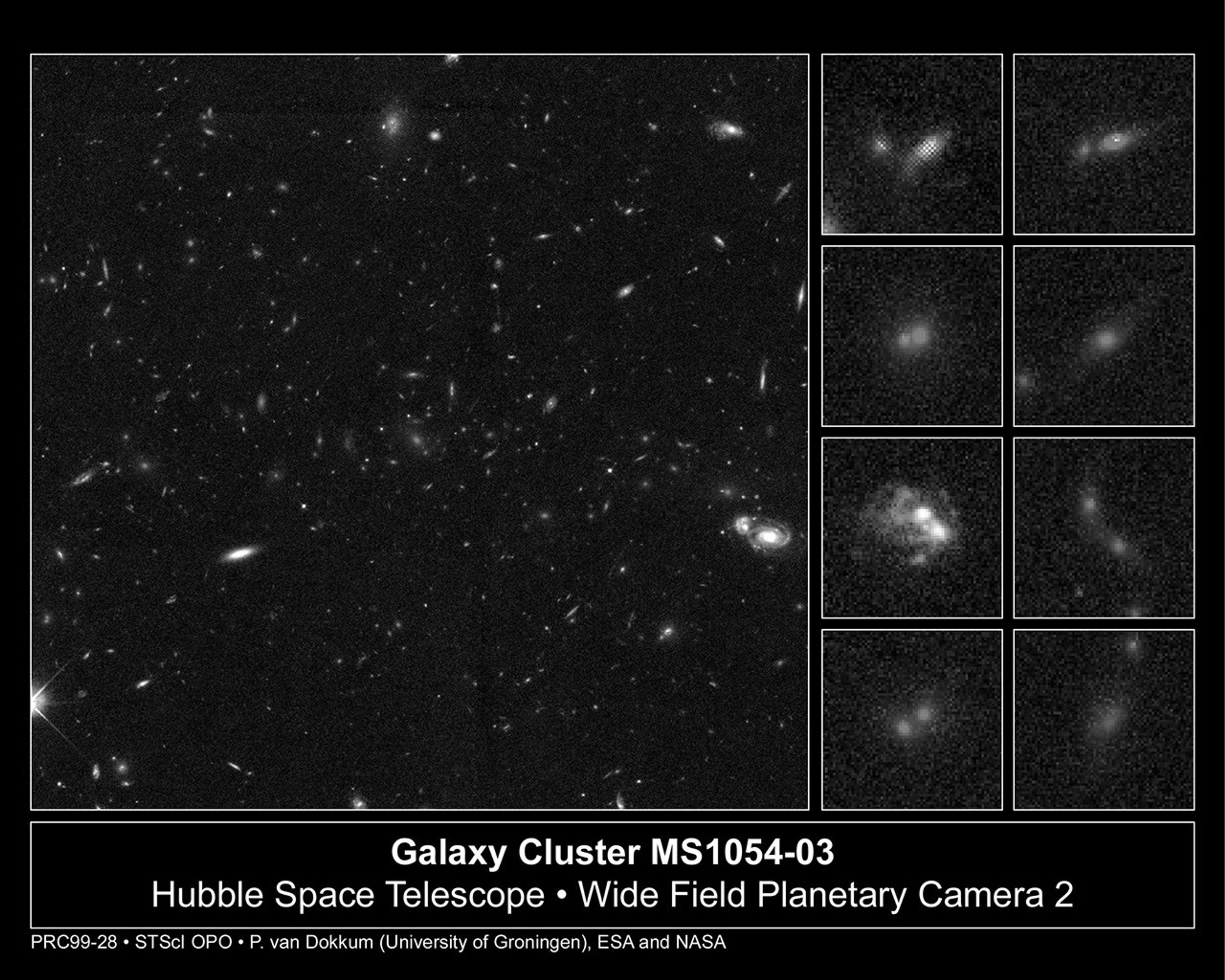1 min read
Galaxy Collisions in Distant Cluster

The group of galaxies – or "galaxy cluster" – catalogued as MS1054-03 is 8 billion light-years away, one of the most distant known so far. Although hundreds of galaxies appear in the NASA/ESA Hubble Space Telescope image, a European-led team of astronomers has studied in detail 81 galaxies that certainly belong to the cluster, 13 of which are remnants of recent collisions or pairs of colliding galaxies. This is by far the largest number of colliding galaxies ever found in a cluster.
The picture is actually a "mosaic" of images, so that astronomers can have a much wider view of the distant cluster. This is why the colliding galaxies, mostly located in clumps in the outskirts of the cluster, had not been discovered so far.
In the image, streams of stars can be seen being pulled out of the galaxies, a consequence of the huge tidal forces in action. The red color of most of the merger remnants means that the stars are old and not much star formation has "recently" taken place.
The observations with the Hubble were made in May 1998. The 10-meter Keck telescope in Hawaii was used to confirm that the colliding galaxies were part of the cluster.
About the Object
- R.A. PositionR.A. PositionRight ascension – analogous to longitude – is one component of an object's position.10h 57m 0.19s
- Dec. PositionDec. PositionDeclination – analogous to latitude – is one component of an object's position.-3° 37' 27.0"
- Object NameObject NameA name or catalog number that astronomers use to identify an astronomical object.MS1054-03
- Release DateJuly 15, 1999
- Science ReleaseCosmic Collisions – European HST Scientists Catch Merging Galaxies in the Act
- Credit
Share
Details
Claire Andreoli
NASA’s Goddard Space Flight Center
Greenbelt, Maryland
claire.andreoli@nasa.gov





































